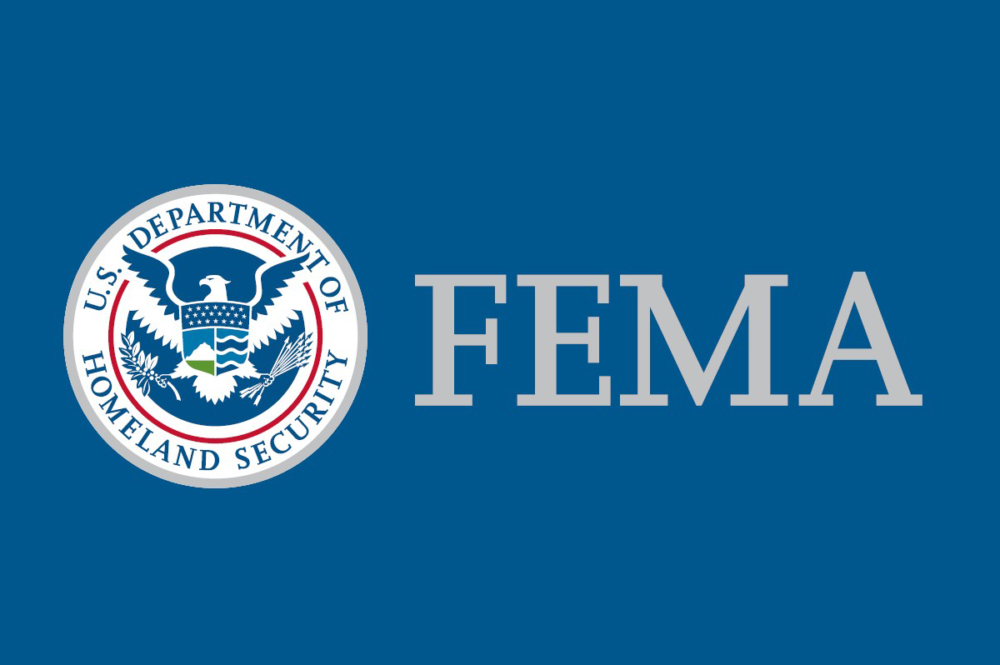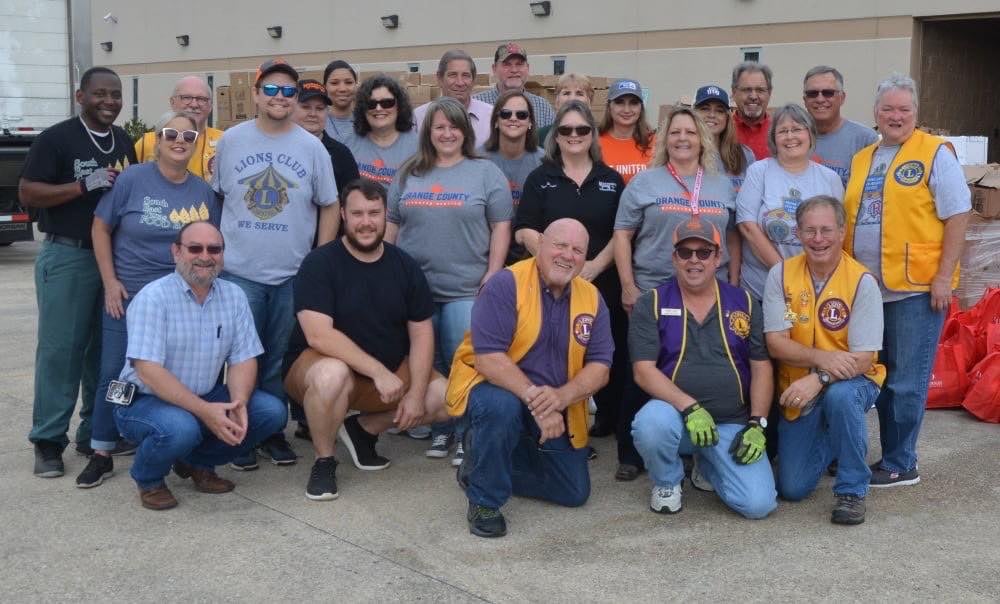Harvey – One year later
Published 7:50 am Wednesday, August 29, 2018

- Eric Williams/The Orange Leader Neighbors worked together to help rescue those in need following the historic rain event of Hurricane Harvey deluging Orange County with 60-plus inches of rain.
By Dawn Burleigh
The Orange Leader
One year ago, the county held it’s breath as the rain fell from the sky and would not stop. Power started to fail, Internet services disappeared and residents were checking their cell phones for word, any word, on when the rain would stop falling and the waters would stop rising.
During the storm, 41,500 square miles of land mass was impacted by Hurricane Harvey. That is larger than Connecticut, Massachusetts, New Hampshire, Rhode Island and Vermont combined.
“In the year that has passed following the devastation of hurricane Harvey, the folks of Texas and throughout Orange County have shown that they are both strong and resilient as we all work together to rebuild,” Congressman Brian Babin said.
“But there is still more to be done, which is why I have worked with my colleagues in Congress to secure over $100 billion in disaster relief. I have also met with White House Budget officials on a regular basis and urged them to promptly release all of the money that we have appropriated for our ongoing efforts. This money needs to be put to good use – not trapped in the bureaucracy, Babin said. “I also want the people of Orange County to know that as these efforts continue, my staff and I are always available to help answer any questions or assist with any disaster-related needs.”
Word of the change of the forecast came in at approximately 10 p.m. August 29, 2017.
Almost immediately a press release was sent out reading, “Emergency transportation has been suspended for the safety of our citizens and first responders. Emergency Services will still be available for life threatening situations.
Orange County is still expecting more rainfall over night but we want to assure the citizens that we will be available as soon we can safely begin making our way into the neighborhoods.
All calls for assistance that were already made today will be prioritized in the morning and first responders will be answering those calls to bring people to dry ground.
If you have a life threatening emergency, please call 9-1-1.”
Calls to 9-1-1 were coming in so fast, the lines would fill and the calls would reroute to the next available agency with and open line.
The result was calls to the Sherriff’s Office could be rerouted to another department in the 9-1-1 system.
Not just citizens were in need of being rescued, but even first responders. Pinehurst Police Chief Fred R. Hanauer III had to be rescued by Pinehurst city employees as his home flooded. He, like so many others, has yet to be able to return home.
The numbers of those rescued were numerous.
Many by the Cajun Navy.
“I don’t ever focus on that number … because you don’t have really time to pay attention to that,” said Clyde Cain the founder and chief executive officer of the Louisiana Cajun Navy. “The only number that will always matter to me is how many people didn’t get saved. How can we make that number zero?”
Cain and his fellow sailors have been rescuing people from flooded areas since Hurricane Katrina hit Louisiana in 2005. When Harvey tore through south Texas last year, the Cajun Navy was ready to deploy, but not until their help was requested.
“We’re not here to supersede anybody,” Cain said. “My whole point from the beginning [of founding this organization] was to work with other groups. … We came here to be assistance.”
Volunteering with the Cajun Navy is not an easy job. It is physically demanding, and Cain said he has had night terrors from the things he has seen.
“It’s real dangerous,” he said, “and there’s real people’s lives at risk.”
Cain knows not everybody can help people the way the Cajun Navy does, but there is room for everyone to make a difference in someone’s life.
“We’re just out here trying to inspire others to do what we do,” Cain said. “Everybody has a storm in their life. It doesn’t have to wait until a hurricane. … I believe we just need to get back to the basics of helping each other.”
To aid in businesses in need of recovering from the storm, Orange County Economic Development Corporation issued funds to small businesses under its Harvey Small Business Disaster Recovery Grant program. Qualifying Orange County businesses received a $5,000 grant to assist with recovery efforts.
The $200,000 in available funds were made available in part through the reallocation of the Economic Development Corporation’s restricted funds.
Many residents were able to have a hot meal during the weeks after the storm thanks to Tom Posey.
When his business, Oza’s Diner on MacArthur Drive was hit by Hurricane Harvey, instead of “twiddling” his thumbs Tom responded to the calling in his heart to help with relief efforts at the emergency center set up at the Northway Shopping center in the early days after the storm. When businesses began reopening and emergency relief organizations left the area, he and Linda, his wife, moved their tent and equipment to the VFW Post 2775 parking lot at 5303 North 16th Street and began cooking, according to a previously published Orange Leader article.
In a single day 2,500 to 3,000 meals were served.
Land Office Commissioner George P. Bush reflected on ‘A Year of Recovery’ since Hurricane Harvey hit Texas, causing damage and devastation across more than 40,000 miles of Texas.
The Texas General Land Office (GLO) was tapped on Sept. 14, 2017, to be the first state agency in history to partner with the Federal Emergency Management Agency (FEMA) on the short-term housing assistance mission. One of the reasons for the designation is the GLO’s proven track record for effective administration of Community Development Block Grant for Disaster Recovery (CDBG-DR) funds from U.S. Housing and Urban Development (HUD) for long-term recovery.
“At the GLO, we were honored to be designated, for the first time in Texas history, the first state agency to partner with FEMA on the short-term housing mission to help Texans get back on their feet,” said Commissioner Bush. “What I witnessed in the response was Texans helping Texans, caring for one another and proving that not even the worst natural disaster in our state’s history, can stop us. Hurricane Harvey disrupted the lives and livelihoods of millions of our coastal neighbors, but Texans are strong, and we have come together in a historic fashion to help one another. We continue to bounce back stronger than ever.”
The Texas General Land Office was tapped three weeks after Hurricane Harvey made landfall to be the first Texas state agency to partner with the Federal Emergency Management Agency (FEMA) on the short-term direct housing mission to help those affected get on the road to long-term recovery. Through the historic partnership, 3,486 families – more than 10,000 people – were housed in manufactured housing units, travel trailers or through direct lease while an addition 16,195 homes received basic repairs allowing an additional 50,000 or so Texans to live at home while continuing to work towards full recovery. The GLO’s partnership with FEMA following Hurricane Harvey represents the first time in Texas history that any form of repairs was offered as part of the short-term disaster housing assistance mission.
In addition to standing up the entirely new FEMA housing programs, Commissioner Bush worked with U.S. Housing and Urban Development (HUD) Secretary Ben Carson on mortgage forbearance for those homeowners struggling to make payments following Hurricane Harvey.
“By expanding mortgage relief and including more options to help those struggling to meet their monthly payments, it takes the pressure off and helps folks focus on recovery while regaining a sense of normalcy,” said Commissioner Bush.
Commissioner Bush and the GLO team have also been working since landfall to push forward Community Development Block Grant for Disaster Recovery funding from HUD. On August 17, 2018, Secretary Ben Carson signed the final grant agreement officially authorizing the Texas General Land Office to begin spending $5.024 billion allocated for long-term housing assistance to help Texans recovering from Hurricane Harvey. The State Action Plan for the allocation of housing assistance funds was approved June 25, 2018. The grant agreement is the final step required before the GLO can access the funds for reimbursement for programs outlined in the State Action Plan.
“Disaster recovery requires long-term commitment to helping communities rebuild,” said Commissioner Bush. “HUD’s signing of the grant agreement is the final step in enabling the GLO to move forward with our detailed plans for helping communities across the Texas coast recover from Hurricane Harvey. We remain committed to getting this funding out to communities as quickly as possible in order to bring folks home.”
The GLO has already committed more than $100 million of the $250 million set aside for the Multi-Family Affordable Rental Property Program. To date the GLO has moved forward on awards for 26 affordable rental rehabilitation projects in several communities including Rockport, Port Arthur, Orange, Victoria, Beaumont, Sweeny, New Waverly and Bay City. Currently obligated projects will repair more than 1,400 rental homes. The application process is ongoing and will continue until the funding is fully obligated. An additional $57.8 million in CDBG-DR funding held back by HUD from previous allocations was released at the request of Commissioner Bush in the days following Hurricane Harvey. These funds have been awarded by the GLO for buyouts and acquisitions of repeatedly flooded homes in Harris county as well as workforce housing in the Coastal Bend
In need of assistance in recovering from Harvey? Contact one of the following organizations:
Nehemiah’s Vision
We are gearing up for our Summer Volunteers!!! If you are in need of debris clean up please give us a SHOUT!! You can call our office at (409) 617-1038 or visit our website www.nehemiahsvisionrecovery.org, click the “GET HELP” tab, fill out the form and someone will contact you for more information! Please help us spread the word!!
Crisis Counseling Program
Southeast Texas Disaster Assistance and Crisis Response Services through Region 5 Education Service Center is offering assistance with identifying needs and resources as well as referrals for available disaster assistance resources and crisis counseling for those struggling in the aftermath of Hurricane Harvey. Call 409-951-1771 for more information.
Orange County Disaster Rebuild
Orange County Disaster Rebuild Team is dedicated to helping those impacted by natural or man-made disaster. Do you need assistance? Orange County Disaster Rebuild is here for you. If your home has been damaged or destroyed in a state declared disaster and you meet one or more of the following qualifications, we may be able to assist you:
*Own your home
*This is your primary residence
*Under or uninsured at the time of the disaster
*Low Income
Orange County Disaster Rebuild knows that recovery can take time, and we have a dedicated team that wants to help. Please contact us at
211 and we’ll walk you through the process of recovery.




